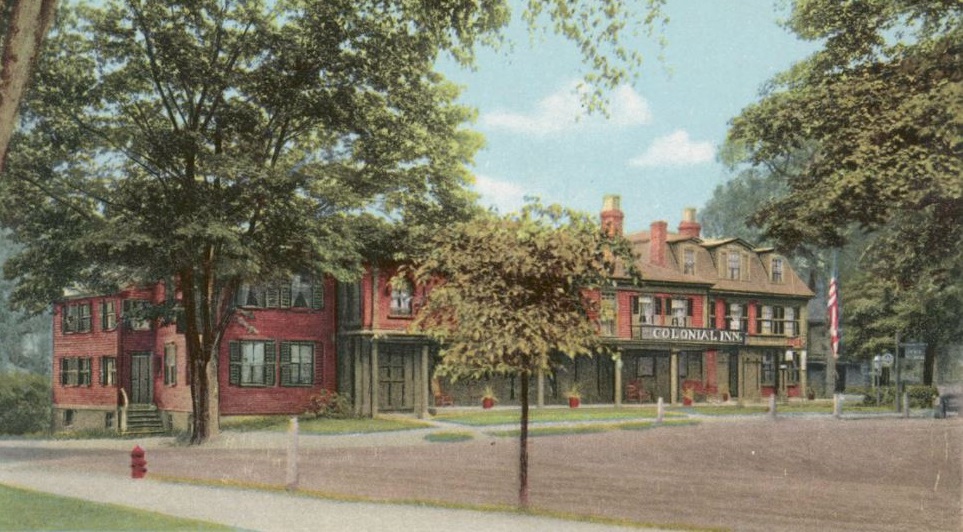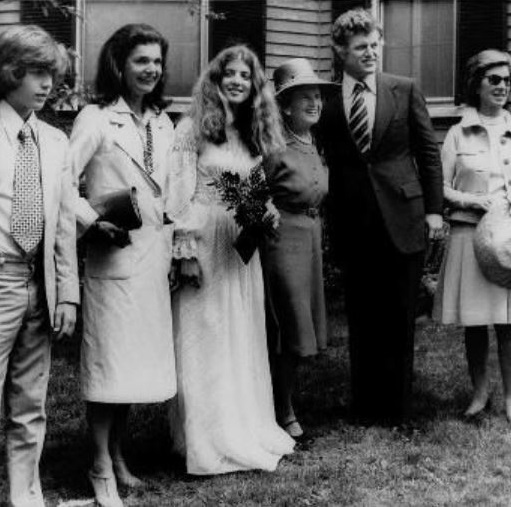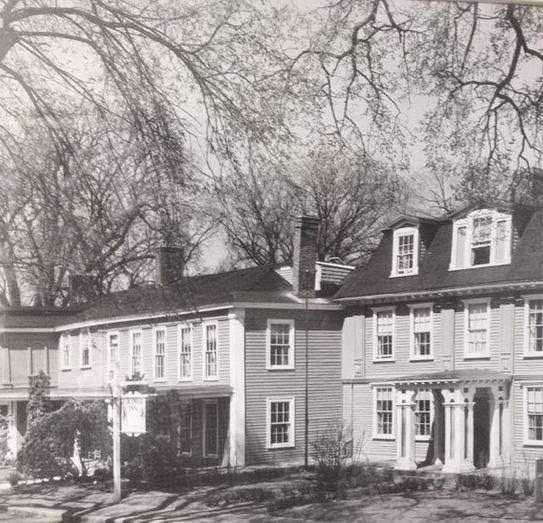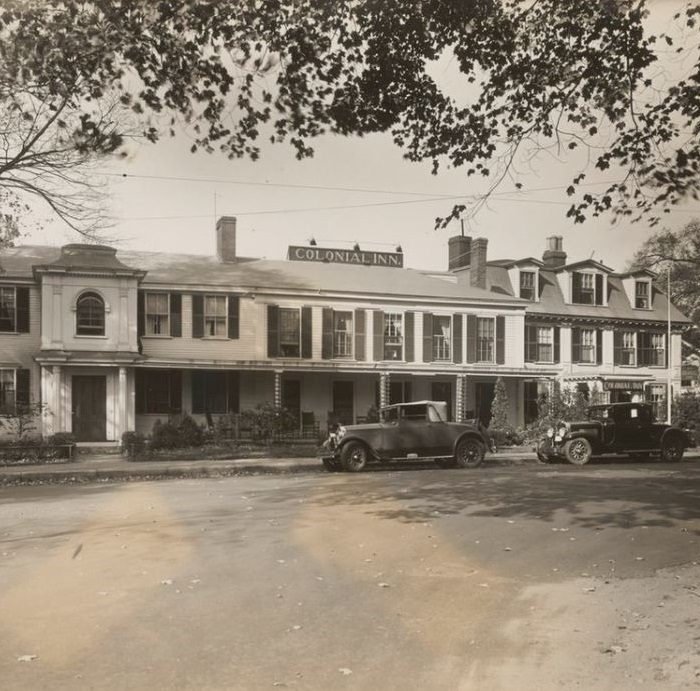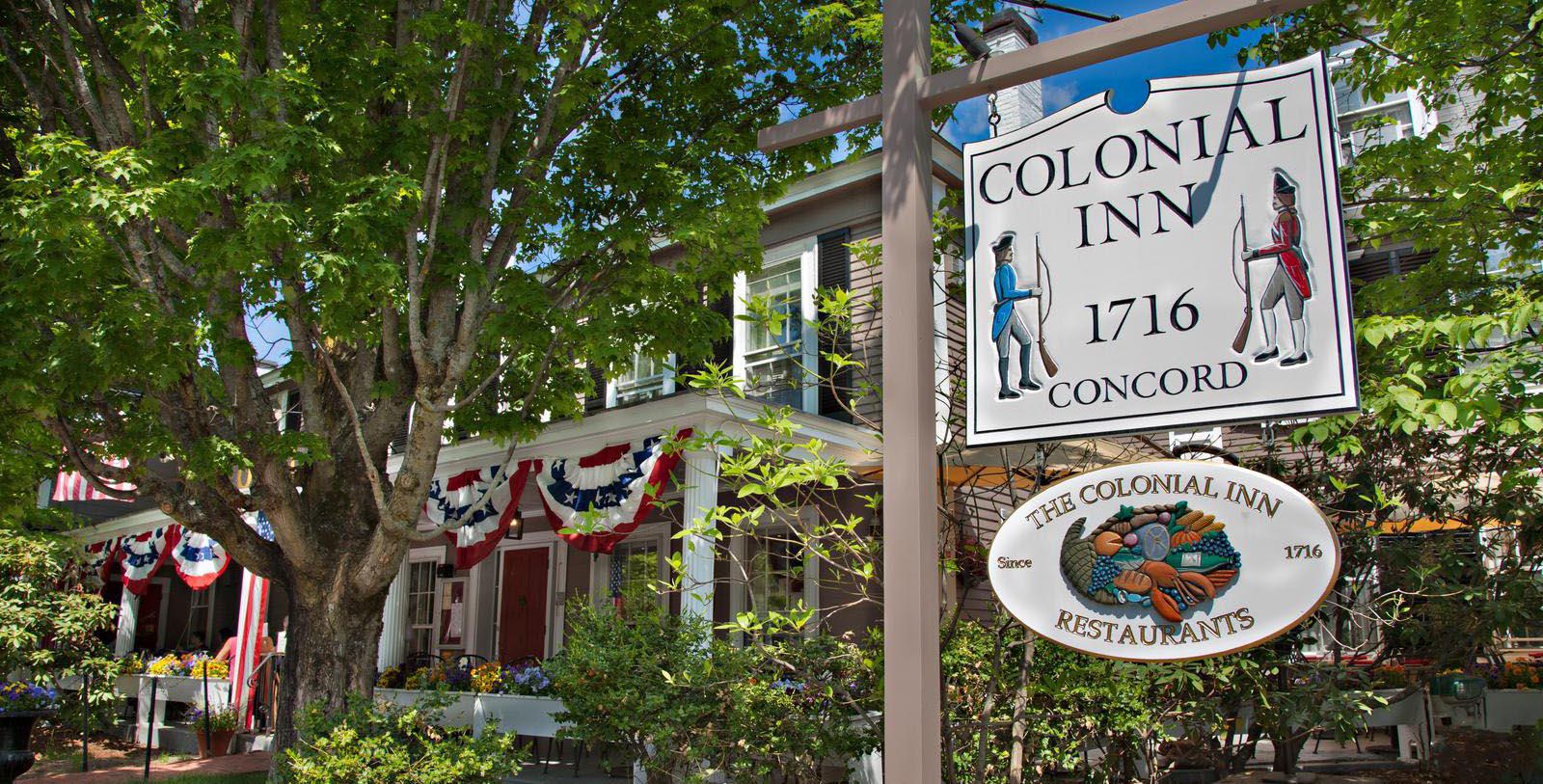Receive for Free - Discover & Explore eNewsletter monthly with advance notice of special offers, packages, and insider savings from 10% - 30% off Best Available Rates at selected hotels.
history of concord's colonial inn
Discover Concord's Colonial Inn, which is best known for the role it played in the Battles of Lexington and Concord on April 19, 1775.
Concord's Colonial Inn, a member of Historic Hotels of America since 2005, dates back to 1716.
VIEW TIMELINEA member of Historic Hotels of America since 2005, Concord’s Colonial Inn has been a renowned local landmark in Concord, Massachusetts, for more than three centuries. Interestingly, the Concord, MA hotel originally existed as three separate buildings, with the earliest portion constructed by Captain James Minot in 1716. But today, the entirety of Concord's Colonial Inn in Concord, Massachusetts is best remembered for the role it played during the American Revolutionary War several decades later. In the period leading up to the conflict, the middle portion of the current inn functioned as a military storehouse. The storehouse itself was part of a much larger armory that American militiamen had initially organized for their own self-defense against the Native Americans. With relations between Great Britain and the Massachusetts colonists openly hostile by the mid-1770s, the British Royal Governor of Massachusetts, General Thomas Gage, decided that the munitions were a threat. General Gage subsequently commissioned a column of British soldiers to march from Boston to seize the weapons.
But American Patriots rallied to protect the depot, thus starting the Battles of Lexington and Concord. After brushing aside some resistance in neighboring Lexington, the British column eventually made its way into Concord on the afternoon of April 19, 1775. Billowing smoke from the center of town alerted nearby American militiamen, who raced to stop them. The British and the Americans eventually fought at the North Bridge, with the militia forcing them to retreat. At the time of the battle, a descendant of Captain Minot—Dr. Timothy Minot Jr.—lived and worked on the western side of today’s inn, which is now home to the Liberty Restaurant. He subsequently turned his home into a makeshift field hospital to care for the wounded American militiamen. Dr. Minot Jr. Proceed to use the current Liberty Room as the hospital’s main triage center, with “Room 24” serving as his operating room. (In a less pleasant light, “Room 27” functioned as his morgue.)
In the years that followed, Dr. Minot sold the eastern building to his son-in-law, Ammi White, who was notorious for having killed a wounded British soldier with a hatchet amid the fighting at the North Bridge. Deacon John White then bought the western and central buildings from the Minots. (Deacon White believed in a strict adherence to the Sabbath and would keep a watchful eye on Sundays for any folks traveling along Lowell Road.) But in 1799, Ammi White sold his portion of the complex to John Thoreau, the grandfather of author Henry David Thoreau. John Thoreau’s son—also named John—even worked for Deacon White in the store next door as a child. In 1835, the younger John moved his own family—including his sisters—back into the house for the next two years, while his own son, the celebrated Henry David, attended Harvard College. As such, Henry David Thoreau considered the historic East House to be his primary residence.
The East House was eventually sold to Daniel Shattuck in 1839, who had previously bought out Deacon White of the other structures years earlier. He converted the central structure into a dwelling and deeded the entire complex to his daughter Frances right before the onset of the American Civil War. Frances and her husband, Louis Surrette, subsequently turned the location into a 20-room boarding house, having combined the East House and Central Building together into a single unit. They named it the “Thoreau House” after Henry’s aunts, who had spent their youth entertaining guests in the sitting room. Nevertheless, the facility was auctioned off to the Abrams family in 1900. Interested in renovating the destination, they reopened it as the “Concord’s Colonial Inn” not long afterward. The Abrams’ family quickly expanded upon the inn’s accommodations, attaching on the neighboring West House, which had remained a private home up until that point.
Concord’s Colonial Inn gradually developed a reputation for luxury and hospitality, becoming one of the most popular vacation hotspots in Massachusetts. Indeed, some of the most illustrious people in the nation visited throughout the following years, such as J.P. Morgan, John Wayne, and Shirley Temple. Future U.S. President Franklin Delano Roosevelt stayed at the inn back in 1904, who had just finished his undergraduate studies. (Like Henry David Thoreau, Roosevelt’s alma mater was Harvard College.) Then, several decades during the 1970s, former First Lady Jacqueline Kennedy Onassis, U.S. Senator Ted Kennedy, and several other members of the Kennedy family all spent time at Concord’s Colonial Inn. They had specifically traveled to Concord to watch Caroline Kennedy graduate from the incredibly prestigious Concord Academy! Today, Concord’s Colonial Inn continues to be one of the best holiday destinations throughout New England. Its spectacular services and fascinating institutional history are without equal.
-
About the Location +
Algonquian-speaking Native Americans inhabited the site of present-day Concord for millennia. They subsequently referred to it as “Musketaquid” in reference to the area’s flat marshlands and pastures. The site also sat at the confluence of two rivers, the Sudbury and the Assabet. Both waterways provided a source of food, as well as a means for easy transportation. Even the soil proved to be quite fertile, allowing the natives to cultivate a wealth of crops, specifically corn. It was for those exact reasons that English colonists eventually settled the region during the early 17th century. Led by Reverend Peter Bulkeley and Major Simon Willard, the colonists had arrived directly from Boston. Upon falling in love with the countryside, the two negotiated a treaty with the Native Americans to acquire the land. Indeed, the English even referred to the new settlement they created as “Concord,” in honor of the peaceful discussions. Concord developed a successful local economy over the next several decades, which made the town one of Massachusetts’ most prosperous by the eve of the American Revolution. In fact, its economic affluence inspired the Massachusetts Provincial Council to place a sizeable armory within the town.
The presence of the arsenal eventually attracted the ire of Royal Governor General Thomas Gage, who had been dispatched from Great Britain to prevent the colonists from erupting in open rebellion during the 1770s. By this point, people throughout Massachusetts had grown enraged over a series of harsh taxes and laws that British Parliament had passed without their consent. To keep the colonists in line, Gage sent a column of soldiers to Concord with order to destroy the munitions. Thanks to the efforts of Patriots like Dr. Joseph Warren, Paul Revere, and William Dawes, militiamen living in various towns began marshalling to stop the British advance. The two sides would come to blows on April 19, 1775, during what became known as the Battles of Lexington and Concord. After fighting off a company of militia in Lexington, the British arrived in Concord and to set fire to several buildings that still housed weapons. In response, more American militiamen confronted the British a half-mile outside of town at the North Bridge. The Americans subsequently forced the British out of Concord and chased them all the way back to Boston under heavy attack. The militiamen proceeded to besiege Boston over the next ten months, marking the beginning of the American Revolutionary War.
In the wake of the American Revolution, Concord remained one of Massachusetts’ most influential communities. The economy only continued to grow, with many new storefronts and municipal structures debuting downtown. Perhaps the most noteworthy product sold in Concord at the time was the Concord grape, which resident Ephraim Bull first grew in 1849. Its success eventually helped the company Welch’s get its start due to ease at which the grapes made juice. But Concord also emerged as an important cultural capital within Massachusetts, as many literary figures had come to call the community home by the mid-19th century. The first writer to relocate to Concord was the great Ralph Waldo Emerson, who bought a home in town in 1834. He was later joined by other celebrated intellectuals, such as Amos Bronson Alcott and Nathaniel Hawthorne. The illustrious philosopher Henry David Thoreau was even born in Concord and returned often after becoming an adult. Concord’s academic atmosphere contributed to the emergence of a resolute anti-slavery society right before the outset of the American Civil War, too. In fact, many within the community made Concord a significant stop along the Underground Railroad.
Today, Concord serves as a major suburb inside the Boston metropolitan area. It continues to be a very prosperous community, as well as a haven for many contemporary American authors. The town’s fascinating past has also made it a popular tourist destination, particularly among the nation’s demographic of cultural heritage travelers. For instance, it is home to numerous attractions, including the former residences of Ralph Waldo Emerson, Nathanial Hawthorne, and Louisa May Alcott (who had also grown up in town.) Concord is also the site for a large portion of the Minute Man National Historical Park. Operated by the National Park Service, the park specifically conserves much of the battlefield for the Battles of Lexington and Concord. In Concord itself, Minute Man National Historical Park constitutes locations like the Old North Bridge and Barrett’s Farm. If that was not enough, dozens more historical landmarks and cultural institutions are just a short drive away in downtown Boston. Few places in America are ripe with so much history than Concord, Massachusetts.
-
About the Architecture +
Concord’s Colonial Inn still displays the same Federal-style architecture that has defined it for the better part of four centuries. Historically speaking, Federal architecture dominated American cities and towns during the nation’s formative years, which historians best identify as lasting from 1780 to 1840. The name itself is a tribute to that period, in which America’s first political leaders sought to establish the foundations of the current federal government. Fundamentally, the architectural form had evolved from the earlier Georgian design principles that had greatly influenced both British and American culture throughout most of the 18th century. The similarities between the two art forms have even inspired some scholars to refer to Federalist architecture as a mere refinement of the earlier Georgian aesthetic. Oddly enough, though, the architect deemed responsible for popularizing Federal style in the United States, was in fact, not an American. Robert Adams was the United Kingdom’s most popular architect at the time, with his work largely involved providing his own spin on the infusion of neoclassical design principles with Georgian architecture. (This is also the reason why some refer to Federal architecture as “Adam-style architecture.”) As such, his new variation spread quickly across England, defining its civic landscape for much of the Napoleonic Era. Despite the bitter resentments that most Americans harbored toward Great Britain at the time, their cultural perceptions of the world were still largely influenced by the old mother country. Adams’ new take on Georgian architecture rapidly spread across the United States, as such.
Unlike many other popular American architectural forms, Federal style is easily recognizable due to its unique symmetrical and geometric design elements. Most structures created with Federal architecture typically stand two to three stories in height and are rectangular (sometimes square) in their overall shape. While the buildings normally extended two rooms in width, larger structures would usually contain several more. In some cases, circular or oval-shaped rooms functioned as the center living space. The outside façade of a Federal-style building was simplistic in their appearance, although some detailed brass and iron decorations made their appearance, too. Perhaps the most common form that the ornamentations assumed were elliptical figures, as well as circular and fan-shaped motifs. Architects concentrated those features around the front entrance, where cornices, iron molding, and a beautifully sculpted fanlight resided. (Fanlights are a regular design element for Federalist buildings, appearing in other locations throughout the top of the structure, as well). The exterior walls themselves were primarily composed of clapboard out in the country but consisted of brick in urban areas. Palladian-themed windows also proliferated throughout the façade, installed in a way that conveyed a deep sense of balance. Roofing was also hipped and contained simple gables and dormers that allowed for natural light to more easily infiltrate the upper echelons of the structure.
-
Famous Historic Events +
Battles of Lexington and Concord (1775): On the evening of April 18, 1775, a column of British soldiers quartered in colonial Boston departed on a march north to the nearby community of Concord. The Royal Governor of Massachusetts, General Thomas Gage, was facing the possibility of open rebellion among the local American colonists, who had grown weary of British rule. (The colonists had become angry over a series of restrictive taxes and laws passed by British Parliament without their consent—or even input.) To reduce the potential for revolt, Gage targeted the Americans’ ability to arm themselves. As such, the general ordered Lieutenant Colonel Francis Smith and his command of 700 British soldiers to Concord and destroy its depot of weapons. Most of the guns were in different areas across town, including the middle portion of what is now Concord’s Colonial Inn.
Alerted to the order, Dr. Joseph Warren of the Massachusetts Provincial Congress quickly set about warning the surrounding countryside. He arranged for two colleagues—Paul Revere and William Dawes—to ride out on horseback and spread word of the expedition. (Revere was also alerted separately after Robert Newman hung lanterns within Boston’s North Church—a preplanned signal organized by Revere himself.) Taking different routes, the two men reached Lexington, where they met with revolutionary leaders Samuel Adams and John Hancock. But they passed through numerous communities along the way, informing their leaders of the pending attack. The two men subsequently met a third rider—Samuel Prescott—who rode alone to Concord to prepare its residents.
As a result, American militias—known colloquially today as “Minutemen”—began marshalling in their respective town squares. More than 70 men gathered in downtown Lexington, too, where they eventually confronted the British column the following morning. After a tense standoff, a lone gunshot rang out from an unknown assailant. Unnerved, the British fired a volley of bullets into the massed Americans, killing eight and wounding nine. The Americans shot back to little effect, before dispersing from the center of town. Lieutenant Colonel Smith and his men then continued onward, reaching Concord later that morning at around 8 a.m. They proceeded to search for the munitions, unaware that the Americans had moved most of the cache just hours ago. Some weapons remained in Concord though, prompting the British to set fire to the structures housing them.
In the meantime, around 400 more colonial militiamen gathered on a hill overlooking the town. They grew incensed when they saw smoke billowing from Concord, believing that the British had indiscriminately torched the entire settlement. The militiamen rushed toward the North Bridge and confronted Lieutenant Colonel Smith’s force. The British fired first—when the commander of the militia fell dead, the Americans retaliated. Outnumbered, Lieutenant Colonel Smith ordered a hasty retreat to Boston. But the Americans seized the advantage and harried the British column. Hundreds more militiamen joined the attack, too, which further alarmed the retreating British. Lieutenant Colonel Smith’s retreat gradually devolved into a route, as the Americans constantly launched ambush after ambush. Back in Concord, casualties from the day’s fighting continued to stream into the town square. Several buildings operated as medical facilities as such, including the home of Dr. Timothy Minot Jr. (now also a part of Concord’s Colonial Inn.)
The fighting finally stopped that evening when the British managed to reach the artillery cover of the Royal Navy moored in Boston Harbor. By this point, some 4,000 Massachusetts militiamen had descended upon the city, with several thousand more on the way from elsewhere in New England. A siege then befell the British inside Boston, which lasted for ten months. The size of the militia grew, reaching 20,000 in number within a matter of days. The battles on April 19—as well as the following Siege of Boston—marked the beginning of the American Revolutionary War. For the next eight years, the Thirteen Colonies waged a protracted war of independence against Great Britain. Despite the odds, the colonists managed to achieve their freedom and formed the nascent United States of America. The Battles of Lexington and Concord are thus remembered today as two of the most pivotal moments in all American history.
-
Famous Historic Guests +
Henry David Thoreau, renowned author and philosopher known for writing Walden and “Civil Disobedience.”
John Wayne, actor known for his roles in The Man Who Shot Liberty Valance, True Grit, and The Longest Day.
Shirley Temple, child actress known for her role in Bright Eyes and The Little Princess.
Arnold Palmer, winner of 7 major golf championships that include the PGA Championship and the Masters Tournament.
J.P. Morgan, legendary financier and founder of J.P. Morgan and Company.
Ted Kennedy, U.S. Senator from Massachusetts (1962 – 2009)
Sandra Day O’Connor, Associate Justice of the U.S. Supreme Court (1981 – 2006)
Jacqueline Kennedy Onassis, First Lady of the United States (1961 – 1963)
Franklin Delano Roosevelt, 32nd President of the United States (1933 – 1945)
-
Film, TV and Media Connections +
Ghost Hunters: A Shot in the Dark (2010)
























